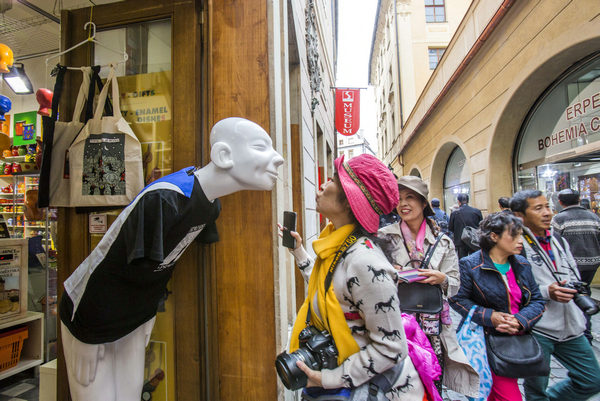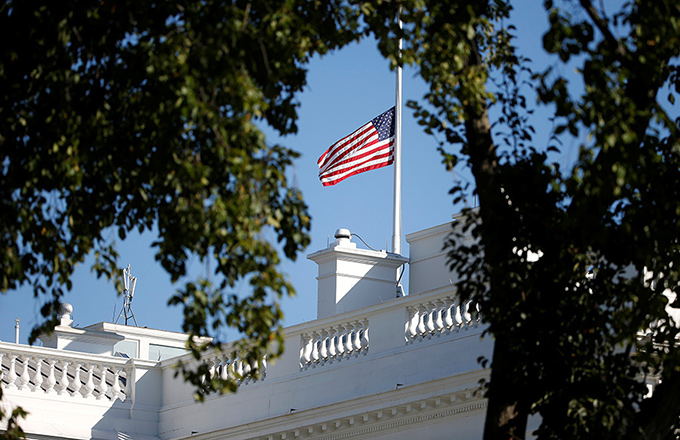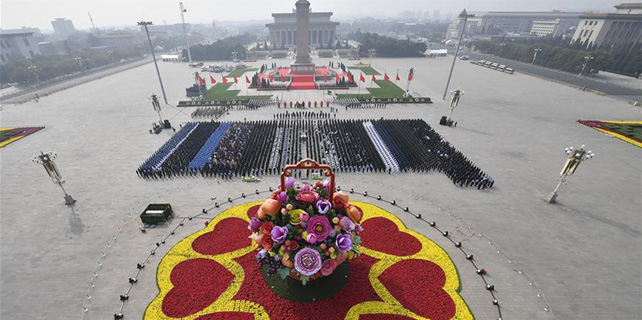Hungary for more TV travel
 |
|
A group of tourists from China's Fujian province, wander along a street in Budapest, where the Chinese TV series Love Actually was shot last year. With high exposure on Chinese screens, the Hungarian capital attracted more than 80,000 Chinese tourists in the first half of this year.[Photo by Yang Enuo/China Daily] |
Popular TV series and movies sometimes unconsciously boost tourism in the location where they were filmed.
It happened in Budapest, where the Chinese TV series Love Actually was shot last year. Featuring in Chain Bridge, Fisherman's Bastion and other iconic buildings in Budapest, the TV series showed the audience the mysterious and ancient European architecture of the city. It made Budapest a favorite destination for Chinese visitors.
"The beauty of Budapest shown in the series is breathtaking. I have added Hungary to my travel destination list and just can't wait to visit," says Wang Min, a college student who loves to travel. A fan of the show posted pictures of his flight tickets to Budapest online and said, "I am ready to walk every street that these two actors have walked in the TV series".
With high exposure on Chinese screens, the Hungarian capital attracted more than 80,000 Chinese tourists in the first half of this year, which indicates year-on-year growth of more than 50 percent, according to data collected by the Chinese travel agency Tuniu.
This TV series gained warm support from the Hungarian government when it was filming in Budapest. Officials sent the crew member a Rubik's Cube with a Hungarian symbol as a gift, further strengthening the mood of cooperation.
Meanwhile, Hungary decided to speed up the visa procedure for Chinese travelers from the end of 2016, to attract more investment and tourists from the world's second-largest economy.
Besides tourism, people-to-people and cultural exchanges between the two countries, China and Hungary have developed many new opportunities for interaction and cooperation.
The two countries signed a memorandum of understanding on cooperation in June, 2015. The MOU, aimed at jointly building the Silk Road Economic Belt and the 21st-Century Maritime Silk Road, was said to be the first such document China had ever signed with a European country.
Cultural exchanges have always been the focus of cooperation between the two countries. In April this year, the Chinese Film Festival was held in Budapest and Jackie Chan, the action movie superstar, took along his latest film, Kung-Fu Yoga.
"This effectively promoted Chinese culture and helped Hungarians to understand China better," says Gabor Cserkesz, president of Budapest-based Chinese Art Center. "Movies are a good medium for us to get to know each other."
Through the five Chinese movies shown the festival, the Hungarian audience could learn more about the history of Chinese culture and the lives of Chinese people.
Food is another popular way of bridging the cultural divide. Early in April, an event featuring Chinese traditional food was held in Budapest. Hungarian people learned how to make dumplings and use chopsticks-learning important lessons about Chinese culture while also enjoying some delicious food.









